Many new lighting options can enhance our environment and improve our daily lives. The brightness and color of light can significantly impact our mood and habits, making it important to create good indoor lighting. To come up with creative best lighting ideas, it is essential to know the latest lighting equipment. Moreover, being well-versed in the terminology associated with this field enables us to offer improved lighting suggestions. For best lighting ideas, we must first consider two things :
Color temperature
When creating the best lighting ideas, it is important to consider the purpose of the environment. For creating a warm and intimate atmosphere, warm colors should be used. On the other hand, for environments used for studying and work that requires concentration, cold colors are more suitable as they can enhance focus and accuracy. Additionally, cold and moonlight colors can help reduce errors.
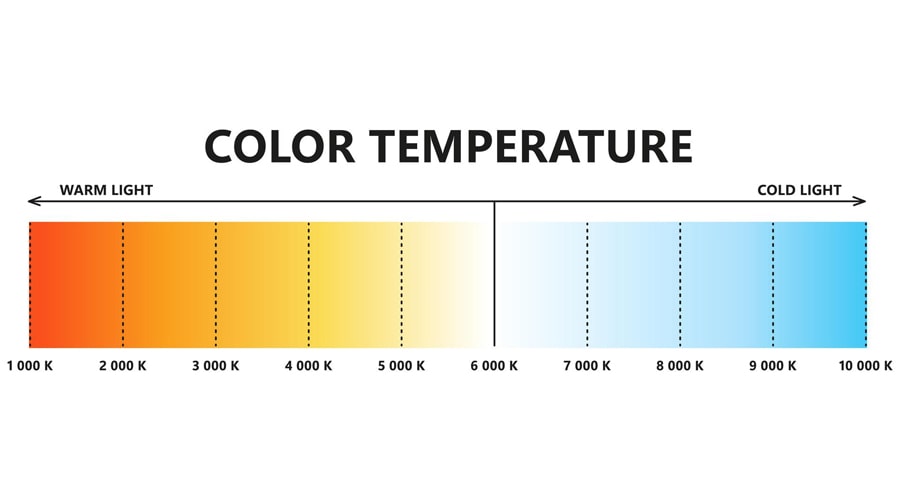
Spreading light
To create effective ambient lighting, it is important to consider the distribution of light based on the purpose of the space. For tasks that require concentration, concentrated lighting should be used, while for social environments, lighting should be spread evenly. Separating a specific area with lighting is also helpful, and a dimmer can be used to adjust the brightness of the space.
Indoor lighting ideas
Interior lighting in a building is not just about providing light, but also about creating a healthy and harmonious environment through the use of lighting knowledge and the psychology of color and light. This article provides a comprehensive explanation of interior lighting materials. By reading this article, readers will gain knowledge on indoor lighting ideas for different areas of the house. It is important to follow the principles of interior lighting to improve quality and create a better atmosphere for those in the building. Using soft colors for lighting in every area of the house is recommended as it has been proven that strong and violent colors can have negative effects on people's mental state, leading to irritability and anger. Therefore, it is advisable to opt for light sources with a gentle and soothing light color in each section.
Living room lighting
To create a visually peaceful living room without causing glare, it is recommended to use warm and indirect lighting. Avoid direct light on the TV screen and adjust the intensity of the light between 70 and 200 lux. For wooden and brown furniture, low and semi-direct lighting is preferable, while modern and bright furniture should have high but indirect lighting. Task lighting should be used for luxury signs and decorative items.
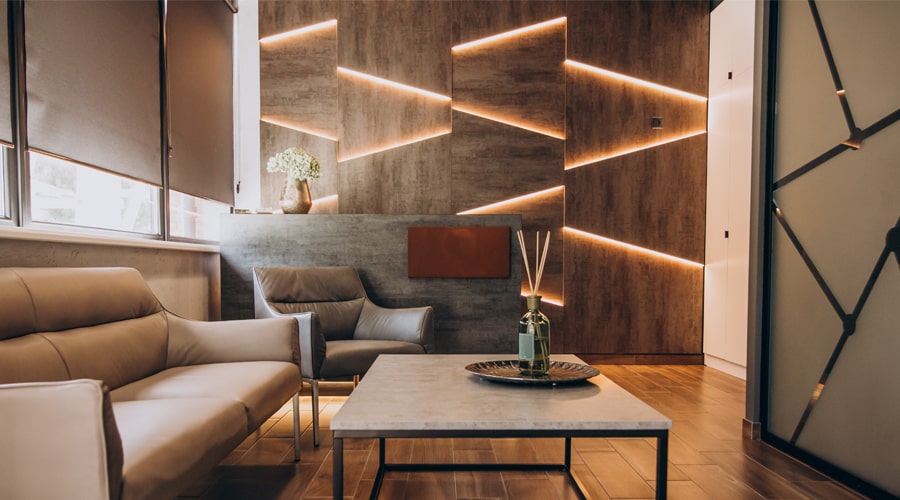
Kitchen Lighting
When it comes to lighting in the kitchen, it's important to have both functional and decorative lighting. The most appropriate type of lighting for the kitchen is white light that falls between 300 and 700 lux. LED light lines can be a great addition, especially under the cabinets, to add some visual appeal and create a guiding light at night.
Bedroom Lighting
When it comes to bedroom lighting, it is recommended to use wall and table lamps instead of chandeliers or bubble lights. These options can cause discomfort to the eyes and are not suitable for bedrooms. The ideal light intensity in a bedroom should be between 50 and 150 lux, and for specific areas like a dressing table or study area, task lighting should be used. Natural and warm light is highly recommended for a cozy bedroom environment.
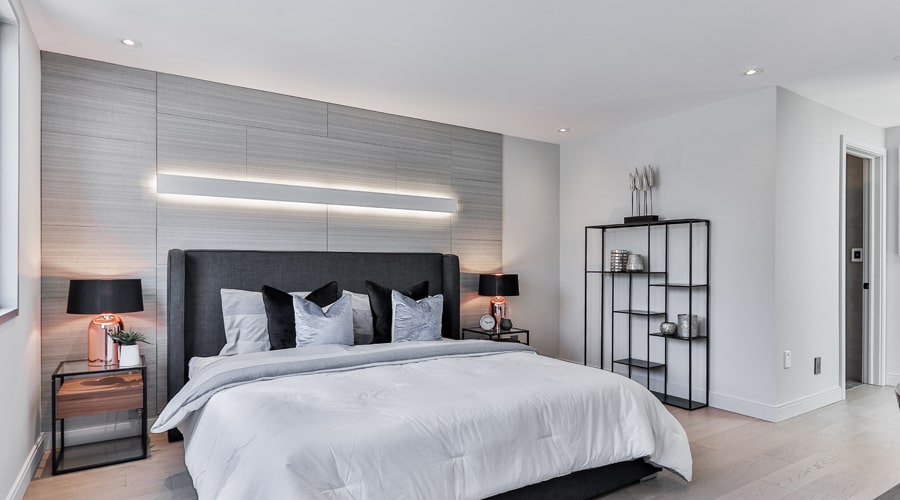
Using hidden lighting in the bedroom is a great way to have a decorative effect and avoid causing headaches or insomnia.
Other parts of the house
Areas such as the bathroom require less light, typically around 50 to 100 lux, while parking lots and corridors need between 70 and 100 lux. Using sensor branches is recommended for these areas.
Outdoor Lighting ideas
External lighting is outside in places like parks, gardens, and houses. It is used to make these places look nice and also to keep people safe. People use this type of lighting for different things like playing sports, having parties, and celebrating special occasions. In the past, people used regular light bulbs for outdoor lighting, but now they use LED lights because they are better for the environment. LED lights are very bright and can be used in many different outdoor places.
Uplighting
These lights are placed in the ground, hidden within, and shine outwards and upwards. They are commonly used for illuminating walls and vertical surfaces.
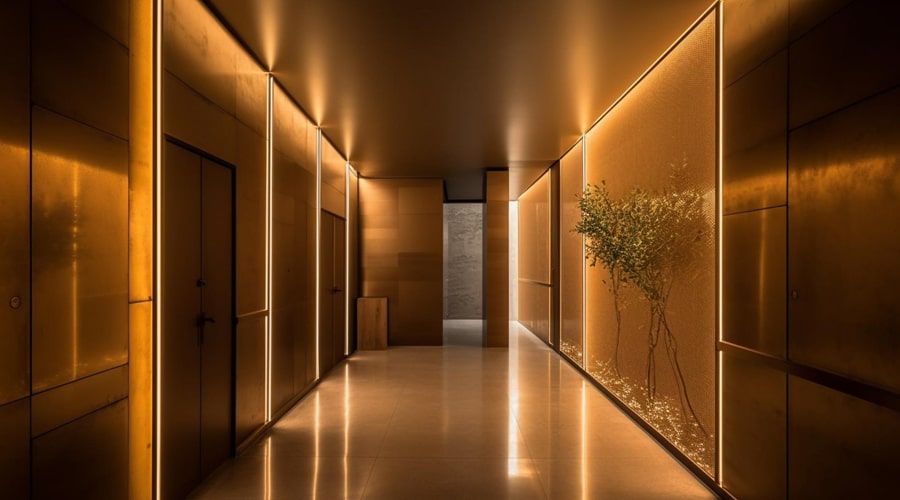
Downlighting
Downlights are created by installing a fixture or covering on the ceiling that directs light downwards.
Floodlight
These lights function as projectors to illuminate broad areas and produce an even light across a wide expanse.
Pathway lighting
Path lights are special lights that are used to make it easier to see and find the way when we are walking or driving on roads or other paths.
Wall packs
Wall lights, also known as wall packs, are installed on walls either as a surface or built-in installation and are typically used for general lighting purposes.
Waterproof light
Waterproof lights are specifically designed for use in wet environments or underwater. It is important to use low-voltage lights and follow safety guidelines when installing them. Additionally, it is recommended to use IP plugs, which provide high protection.
Public space lighting methods
Uplighting
The upward lighting technique involves pointing one or two lights upward at a tree or object, and it is the most commonly used.
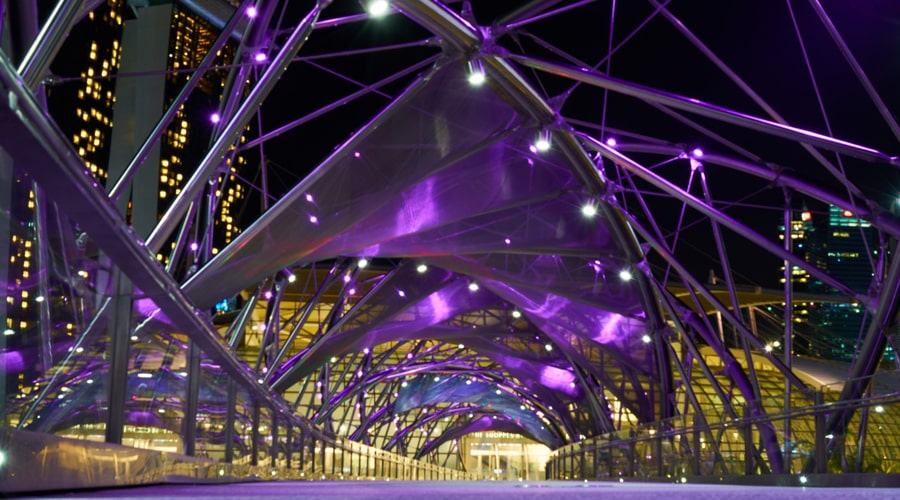
Shadowing light
The technique of shadowing light involves shining light on an object from the front, resulting in the creation of shadows that can enhance the aesthetics of a space.
Silhouetting lighting
Silhouetting lighting involves placing a broad light source behind an object, such as a plant or statue, to create a black-and-white silhouette against a soft white backdrop.
Moonlighting
Moonlighting is a lighting technique where lights are positioned above an object and directed downwards to mimic the illumination of moonlight.